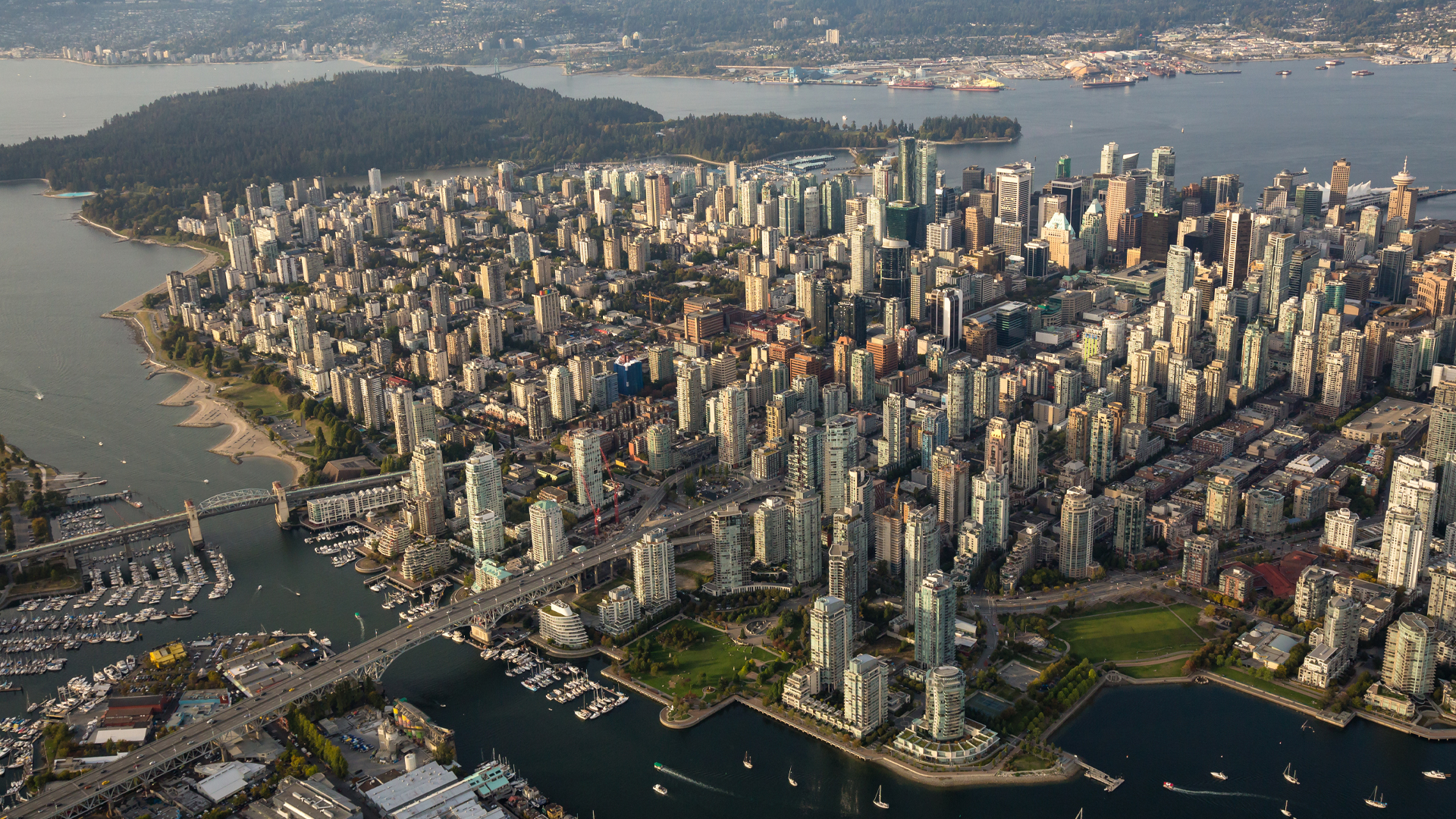
In the fall of 2021, B.C.’s provincial government released an ambitious climate plan, the CleanBC Roadmap to 2030, which outlines innovative and aggressive targets for significant reductions in provincial greenhouse gases by 2030. This includes a world-leading policy to introduce a GHG emissions cap that will require gas utilities to reduce GHG emissions by more than 47 per cent from 2007 levels. For now, only broad direction on the cap has been provided but when implemented, it would place a significant obligation on gas utilities to make steep GHG reductions on behalf of their customers in the buildings and industry sectors – two of the largest emitting sectors in B.C.
In the buildings sector, immediate action would be needed to decarbonize natural gas consumption for space heating and water heating, which produce more than eight million tonnes of GHG emissions annually (figure 1). More than half of the buildings in B.C. (more than one million dwellings and businesses) are heated with natural gas, meaning that complying with the cap will require assertive action by utilities.
FortisBC, the largest gas utility in the province and the owner of an electric utility in the southern interior, recently filed a renewable gas tariff application that would require all new buildings to be allocated renewable natural gas for their full gas consumption. Renewable natural gas is derived from biogas, which is produced from decomposing organic waste from landfills, agricultural waste and wastewater from treatment facilities. The biogas is captured and cleaned to create renewable natural gas, which is also called biomethane.
What Canadians think about the future of oil and gas
FortisBC would acquire additional supply of renewable natural gas from B.C. and beyond as a core strategy to make immediate reductions in the carbon intensity of the gas it delivers and in the resulting GHG emissions. Others are looking to electrification of new and existing natural gas heating with heat pump technology. The B.C. building electrification road map outlines strategies for all new, and most replacement, domestic hot water and space heating systems in the province to be high-efficiency electric (i.e. heat pumps) by 2030.
The pathways to comply with the cap and their consequences on the broader energy system and economy are not well-understood. Researchers at the Institute for Integrated Energy Systems at the University of Victoria evaluated the impact of different technology options to address carbon emissions in the buildings sector and found that B.C. faces profound choices and consequences depending on the strategies it chooses to employ.
Using an energy system model, decarbonization pathways for residential and commercial heating demands in Metro Vancouver were analyzed. The model looked at upstream energy supply and downstream energy demand sectors to develop least-cost approaches for two pathways – one relying on substituting natural gas with electrification for heat, and another substituting natural gas with renewable gases such as biomethane and hydrogen made from renewable electricity. While both approaches will likely be needed, the analysis shows renewable natural gas may be the most cost-effective strategy.
A key focus of the analysis is the development of annual hourly demand profiles for heat and hot water specific to the temperatures of a given region, in this case Metro Vancouver. Resolving hourly demand profiles is critical to planning and operation so that both energy and dependable capacity are supplied for the times of the year when demand is high and resources are limited.
The study found that both pathways require significant additional electricity-generation capacity, either to supply electric heat pumps directly or to power production of electrolytic hydrogen. In this study, this additional capacity requirement is met by new wind and solar installations. In the direct electrification pathway, the variability of the renewable supply and the increased peak electricity demand due to the new heating loads also require installation of significant energy storage capacity (pumped hydro or lithium-ion batteries) to ensure system reliability. In the renewable gas pathway, the gas system buffers demand and supply variations using existing gas storage capabilities, refurbished and expanded for hydrogen storage.
The costs of both the electrification and the renewable gas pathways are highly sensitive to overall heat loads and to variability in the renewable electricity supply. Electrification is more cost-effective when mild temperatures and lower heating needs allow existing generation capacity to meet peak demand. However, a resilient energy system capable of withstanding an extended period with little wind or solar availability that coincides with cold weather events requires a significant addition of electrical storage capacity to maintain reliability. More than 350 GWh of electric-energy storage capacity could be needed to endure a cold-weather period coincident with low wind and solar generation. Of the nine scenarios evaluated, seven showed cost benefits for the renewable gas pathway.
As noted, building heating needs are only one of the demands requiring decarbonization and may be relatively easy to mitigate compared with industry and transportation demands. As GHG mitigation becomes more stringent and broadly implemented, the pathways we pursue will need to be robust under a wide range of scenarios.
In finance and investment, we see portfolio diversification used for risk-management. The findings described above for gas systems suggest that a similar benefit can be realized via diversification of low-carbon energy supply and delivery that invoke multiple energy infrastructure systems for system-wide decarbonization. The benefit of diversification can be difficult to understand because much of the value comes from aspects of transmission and delivery, which are inherently more complex than a metric such as the cost of energy produced by a supply technology. For electricity, delivered cost is becoming less about the energy cost and more about the cost of system infrastructure and reliability.
A national energy grid would be a clean win for Canada
Zero-emissions electricity by 2035 is possible
B.C.’s oil and gas royalty review must take climate action seriously
Thinking more broadly about Canada, our heating requirements are unique in the world. Norway, Sweden and Finland are often used as reference points, but as reported in 2021 by the Canada Energy Regulator, the population-weighted average temperature for Canada is colder than the geographic average for these Scandinavian countries. This means that the average temperature in cities in Canada, which tend to be in warmer locations close to the southern border, are still colder than average temperature across these Nordic regions. Canada remains one of the coldest countries in the world, and cold temperatures increase the need for heating.
As B.C. develops its policy to meet its GHG targets, it will be in the best interest of the province that pathways based on both direct electrification and renewable gas are considered. Given the scale of fossil fuel combustion that will need to be eliminated across all sectors of the B.C. economy, repurposing the gas system to provide key services using renewable gas may be the most cost-effective strategy to meet its GHG targets and warrants further consideration by policy-makers and researchers.
This work was funded through a grant from Mitacs supported by Fortis BC, Inc.














